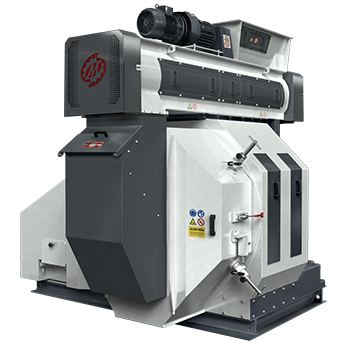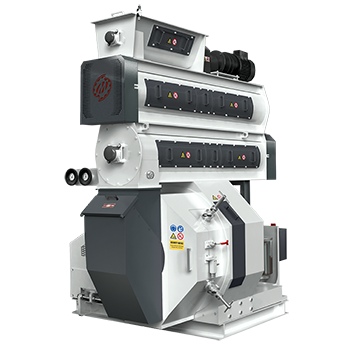Reasons for conditioning
Conditioning, or adding heat and moisture in the feed mill during the pelleting process, is a way to optimize pellet quality, but proper methods must be used to achieve the best results.
When dealing only with the pelleting system, it is apparent that conditioning is the most important factor that influences pellet quality. If done correctly, proper conditioning allows the use of the thinnest possible die and, therefore, the greatest potential throughput.
Though conditioning is far more important than die or roll selection, it is a process that is often overlooked, and certainly not well understood by many feed manufacturers
The four basic reasons why we condition are:
1. To lubricate for faster production rate.
2. To lubricate to extend die life.
3. To lubricate to reduce energy costs.
4. To gelatinize starch for nutritional value.
Increase Production rate
The use of steam can increase the production of a pellet mill on most all feeds. There are a few exceptions, such as urea, mineral feeds and others that contain a lot of dried milk, whey and sugar.
When increasing the production rates of the pellet mill by giving it more steam, this also reduces the fines at the pellet mill. The highest level of fines are made with no steam because the material is dry, but when steam is added materials become soft and pliable and stick together.
A good pellet system needs to have a regulated supply of steam, essential to a good pelleting operation.
There are three areas that must be considered in applying or adding steam: good steam quantity, quality and adequate steam pressure.
Conditioning of Feed Ingredients
The purpose of conditioning a mixture of feed ingredients is to uniformly penetrate each particle with the same amount of moisture and heat, in other words, homogenization. This is accomplished by mixing.
The principles of mixing are time, temperature and turbulence
Time Regardless of the shape or size of the particle, it requires time for moisture and heat to thoroughly penetrate the particles.
If these principles are applied, the surface of each particle will be void of excess moisture, and/or molasses and/or fat. This can easily be observed by inspecting the conditioning chamber. If it is clean, mixing is efficient, if it is coated, mixing is not taking place.
Gelatinization
Most all the moisture added by steam is removed in the cooler. Gelatinization is defined as a breakage of the starch granule, made by a combination of moisture, heat and pressure. Basically, the gelatinization of starch has two results important to digestion:
- Gelatinization enhances the ability of starches to absorb large quantities of water, and this leads to improved digestibility in almost all cases and improved feed conversion in many cases.
- Gelatinization increases the speed at which enzymes can break down the linkages of starch, thus converting starch into simpler and more soluble carbohydrates.
The right ingredients must be present in the formulation in order for it to be properly conditioned and pelleted, and ingredients must be ground to the proper size for it to handle well and be pelleted.
Heat treating ingredients results in better feed conversion for poultry and swine. We’re almost pre-digesting that product when we get it heat treated like that. The animal doesn’t have to spend as much energy digesting the heat-treated product.
“Conditioning” may include steam and/or water addition, expanding, compacting, pre-pelleting, “ripening” and so on. The debate still continues as to what pressure results in the best pellet quality and mill performance for a given feed type.
Depending upon formulation, optimum conditioned mash moisture is in the range of 16.0 to 17.5%, with 4 to 5% coming from conditioning. As a rule, we can expect to add 1% moisture to the pellet mash for each 12.5 °C increase in mash temperature from steam. If the mash is cool, say 10 °C, and we target 85 °C as our mash temperature, we will be adding about 6% moisture. If the mash is already at 11-12%, the final mash moisture will be at or above the upper level of the range of optimum moisture. Conversely, if the mash temperature is at 35 °C, and we target 85 °C, we’ll only be adding about 4% moisture. If the initial mash moisture is 11-12%, the final mash moisture will be at or below the lower level of the optimum for pellet quality and throughput. Both of these situations (or even more extreme) can arise depending on the season of the year and ingredient moisture content.
There are times when we simply can’t reach target temperatures before the upper moisture level is met. Other times, when the grain is dry and warm, we simply can’t get enough steam into the mash without exceeding target temperatures. Late in the crop year, it is often advantageous to add 1 to 2% water during conditioning to improve pellet quality and production rate.
The conditioning process is, without doubt, the most important component of any feed pelleting system, at least as far as pellet quality is concerned.

